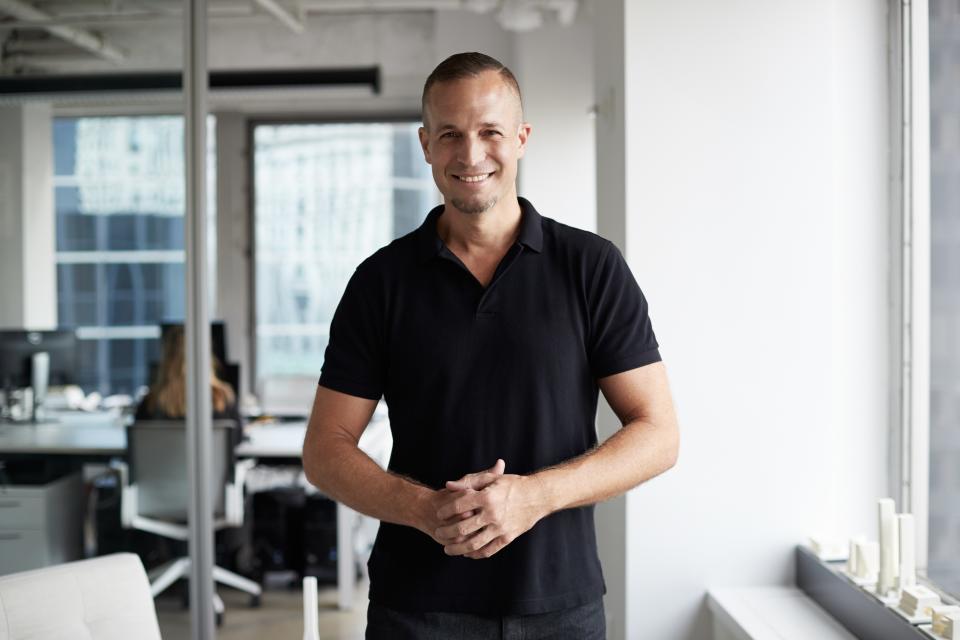Matthias Hollwich Brings European Views on Aging to American Architecture
This is the latest in a series of profiles of immigrants who have made important contributions to the fields of architecture and design.
“Endless curiosity drew me out of Germany,” says Matthias Hollwich, a partner in the Manhattan firm Hollwich Kushner, a founder of the web platform Architizer, and a writer and teacher with a particular interest in how architecture can serve aging populations. The firm became widely known in New York in 2012 for its playful MoMA P.S.1 installation Wendy, and has since created a number of notable buildings, including the Pennovation Center, a tech incubator affiliated with the University of Pennsylvania. Asked what he’s proudest of, Hollwich mentions not the buildings themselves but “the reactions of the people using the buildings—the laughter and smiles that Mark [Kushner] and I experienced when Wendy opened, and which we saw at Pennovation when people started working there.”

Hollwich was born in Munich and studied architecture at the University of Applied Science. In his early 20s, he left Germany planning to work in New York and Rotterdam, each for one year, before returning home. Instead, he also went on to work in Zurich, Amsterdam, and Hong Kong, and found himself returning to New York rather than to Munich. “Every time I left New York I felt like I hadn’t experienced everything here,” he says. “It’s still true now.”
In 200,5 he met Marc Kushner through their friend Jürgen Mayer H., the German architect; a few years later they entered a competition together. The happy collaboration led them to formalize their partnership, and Hollwich Kushner has since been responsible for a number of residential and commercial buildings.
Hollwich is focused on creating new kinds of communities for seniors. In Germany, he recalls, “I shared a house with my parents and sister and also my grandmother. She needed a lot of care for the last three years of her life; we all pitched in. The experience educated me and also took away the fear of aging and the fear of dying.”
As he approached 40, Hollwich began thinking about aging more intently, and teaching about architecture for aging at the University of Pennsylvania: “My experience in Europe is that aging is much more socially integrated into society. I have tried to inject a European way of thinking into the discourse.” The firm has designed two senior centers, but, just as important, he says, “we take what we’ve learned about aging and build it into every one of our projects.” His book New Aging: Live Smarter Now to Live Better Forever was published by Penguin in 2016.
Overall, Hollwich says, as an immigrant, “you realize that the ideas you grew up with aren’t the only right ideas. That makes you a little more humble.”
A longtime observer of the built environment, Fred Bernstein was struck by the number of American architects and designers who were born in other countries. To suggest immigrant architects or designers for future profiles, email fredabernstein@gmail.com.


